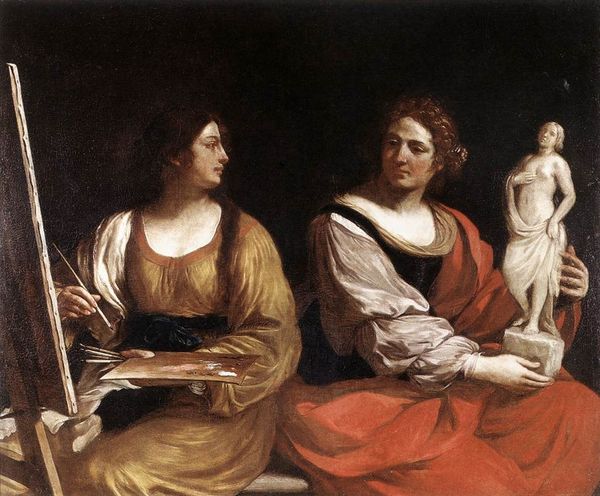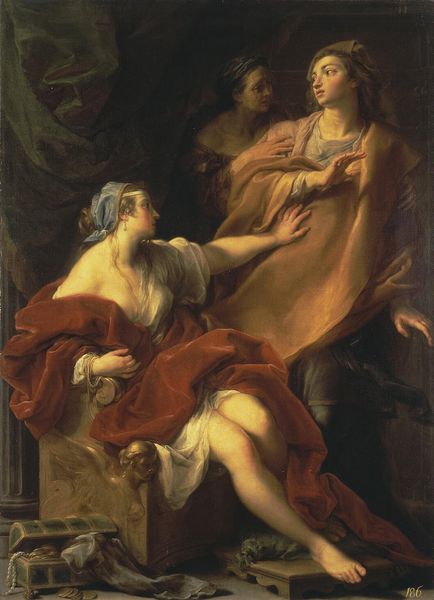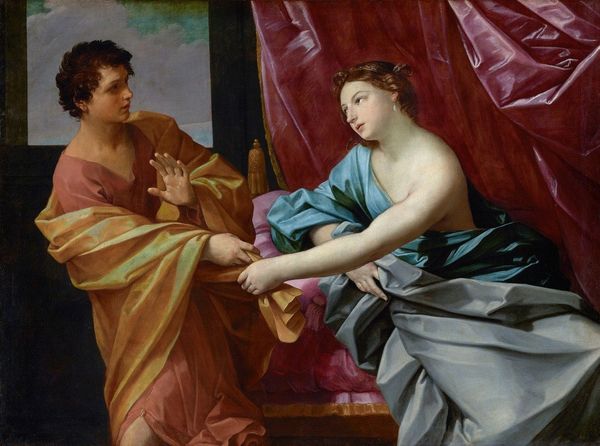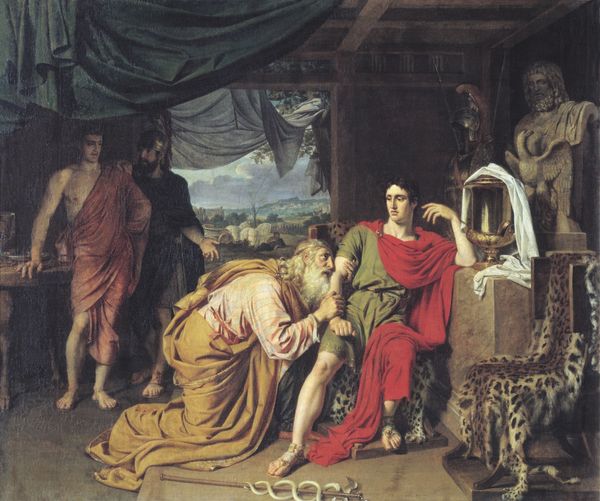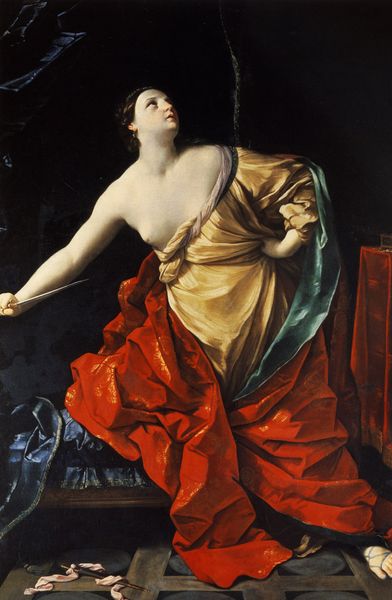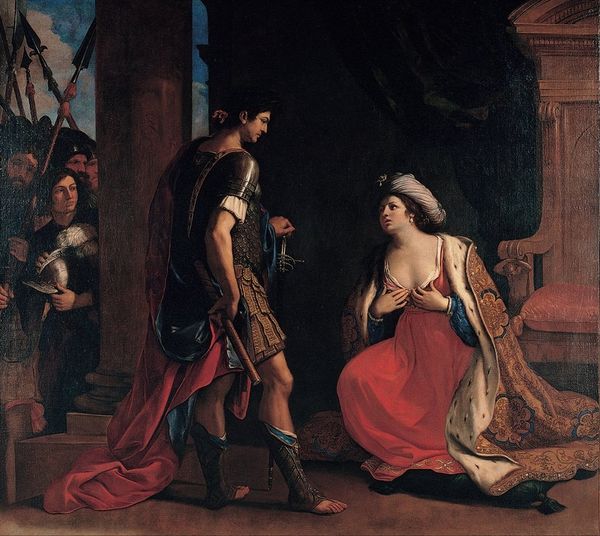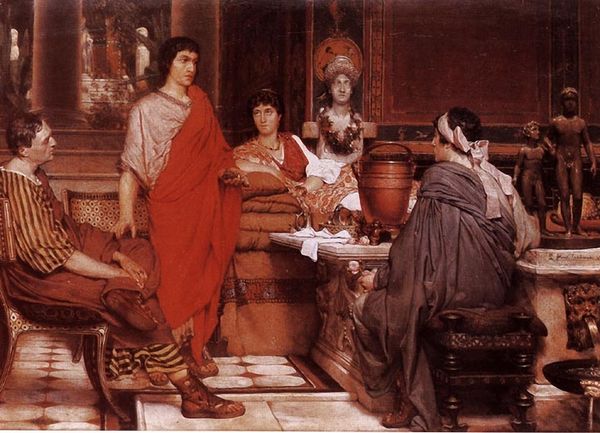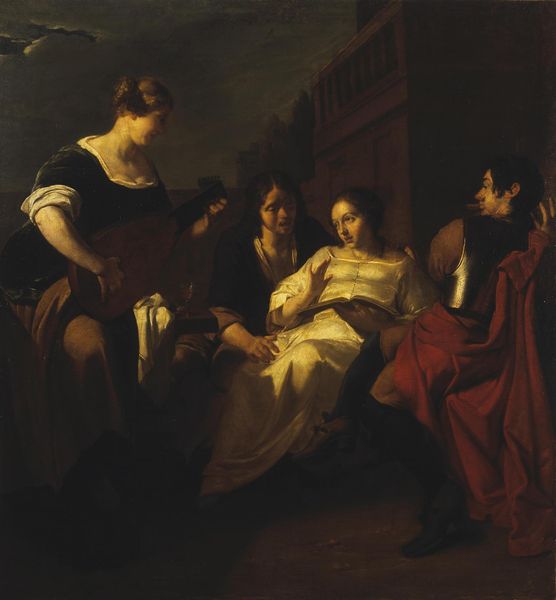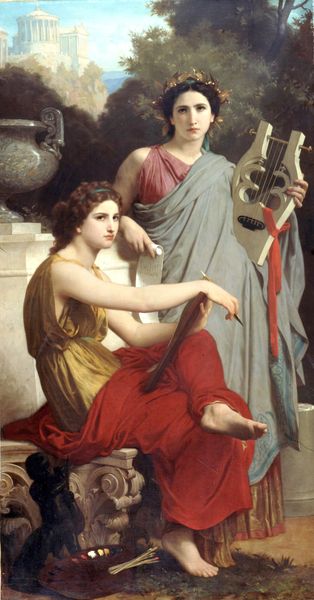
painting, oil-paint
#
narrative-art
#
baroque
#
painting
#
oil-paint
#
figuration
#
christianity
#
genre-painting
#
history-painting
#
italian-renaissance
Dimensions: 195 x 227 cm
Copyright: Public domain
Curator: Guido Reni's "Joseph and Potiphar's Wife," painted in 1631, is a striking depiction of a biblical scene, rendered in oil paint. The story, pulled from Genesis, involves a wife's attempt to seduce her husband's servant, and the latter’s rejection of her advances. Editor: Immediately, I'm struck by the diagonal composition and the dynamism it creates. It feels almost theatrical. The colors are rich, but muted, lending a sense of drama and seriousness. Curator: Absolutely, the painting reflects the Baroque emphasis on drama, but it’s crucial to acknowledge the gender dynamics. Here we see a powerful woman, Potiphar’s wife, whose desires are thwarted by Joseph. The power dynamics play on class, gender, and religion. This scenario raises questions around consent, the male gaze, and social hierarchies within the confines of the domestic sphere. Editor: I see that tension in the figures’ poses. Look how her hand reaches for him, versus his outstretched, resisting gestures. The folds of the fabrics, their direction, almost mirror their opposing intentions. It also leads the eye beautifully, creating movement across the canvas. Curator: The costuming, too, is relevant. Her garments imply luxury and power; consider the fur trim. And we should also discuss his bare feet; it speaks to his class position and also to a certain level of vulnerability within that situation. She literally and figuratively holds power over him, complicating the standard art-historical tropes of passive female nudes. Editor: His relative youth certainly accentuates that tension. And although the faces aren’t emotionally charged, there's something so affecting in his expression: maybe distress or resolve. She conveys regal command and confidence; he, in comparison, embodies swift decision and even anxiety. Curator: What strikes me is how the biblical narrative continues to resonate through time, offering a platform to reflect on sexuality, power, and ethical dilemmas. It invites ongoing conversations about agency, representation, and social justice. Editor: Yes. Deconstructing these compositions allows viewers a better understanding of the artist and the world from which their visions emerged, too. This biblical story, reframed, helps unlock even greater contemporary dialogues.
Comments
No comments
Be the first to comment and join the conversation on the ultimate creative platform.
